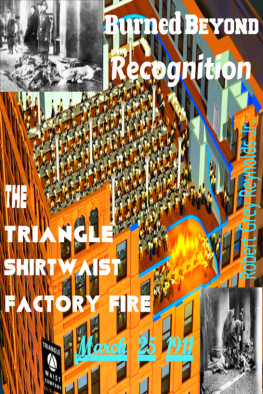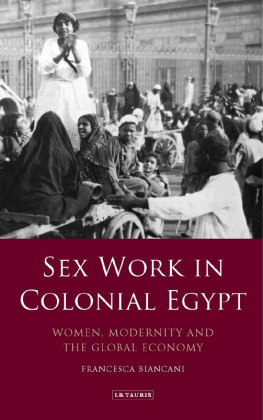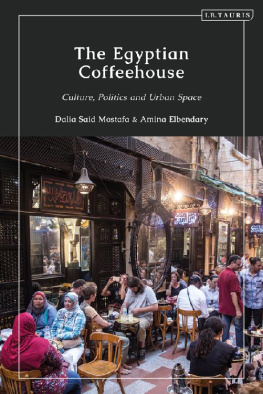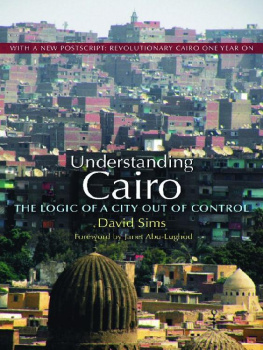A City Consumed
A City Consumed
URBAN COMMERCE, THE CAIRO FIRE,
AND THE POLITICS OF DECOLONIZATION IN EGYPT
Nancy Y. Reynolds
Stanford University Press
Stanford, California
Stanford University Press
Stanford, California
2012 by the Board of Trustees of the Leland Stanford Junior University.
All rights reserved.
No part of this book may be reproduced or transmitted in any form or by any means, electronic or mechanical, including photocopying and recording, or in any information storage or retrieval system without the prior written permission of Stanford University Press.
Printed in the United States of America on acid-free, archival-quality paper
Library of Congress Cataloging-in-Publication Data
Reynolds, Nancy Y., author.
A city consumed : urban commerce, the Cairo fire, and the politics of decolonization in Egypt / Nancy Y. Reynolds.
pages cm
Includes bibliographical references and index.
ISBN 978-0-8047-8126-8 (cloth : alk. paper)
ISBN 978-0-8047-8266-1 (e-book)
1. Consumption (Economics)EgyptCairoHistory20th century. 2. Cairo (Egypt)CommerceHistory20th century. 3. NationalismEconomic aspectsEgypt. 4. EgyptPolitics and government19191952. 5. EgyptHistoryRevolution, 1952. I. Title.
hc 830. z 7 c 348 2012
381.09621609041dc23
2012001451
Typeset by Newgen in 10/14 Minion
For Dwyer, Anson,
and Graham
CONTENTS
ILLUSTRATIONS
Figures
Maps
ABBREVIATIONS
| BOT | Board of Trade (UK) |
| CADN | Centre des Archives Diplomatiques (Center for Diplomatic Archives) (Nantes, France) |
| CNIB | Central Narcotics Intelligence Bureau (Egypt) |
| DOT | Department of Trade (UK) |
| DWQ | Dar al-Wathaiq al-Qawmi (Egyptian National Archives) (Egypt) |
| EC | LEgypte contemporaine |
| EN | LEgypte nouvelle |
| FO | Foreign Office series, UK National Archives |
| HMSO | His/Her Majestys Stationery Office (UK) |
| IC Census | Industrial and Commercial Census (Egypt) |
| IFMCSMA | International Federation of Master Cotton Spinners and Manufacturers Association |
| LAB | Labour series, UK National Archives |
| MAE | Ministre des Affairs Etrangres (Ministry of Foreign Affairs) (France) |
| MAEP | Ministre des Affairs Etrangres, Quai dOrsay, Paris (France) |
| MS | Maslahat al-Sharikat (Department of Corporations) (Egypt) |
| MW | Majlis al-Wuzara (Council of Ministers) (Egypt) |
| NAUK | National Archives, UK |
| OHD | Oral History Department (Jerusalem) |
| SOP | Socit Orientale de Publicit (Oriental Advertising Company) |
ACKNOWLEDGMENTS
WHEN I FIRST chose to write on the history of Egypts department stores, I expected to find a story about consumerism that would help explain womens changing status in twentieth-century Egypt. Shortly thereafter, the Egyptian government announced its intention to put the stores, which had been in the public sector for the past thirty-five years, up for auction to private bidders. The proposed reprivatization exploded into a public controversy about the legacy of the Nasserist state, collective memory of the ethnic basis of Egyptian identity, and the durability of conspiracy theories used to direct political criticism away from the state. That experience taught me to broaden my research on commerce into a study of politics and urban space, a process that took longer than I might have liked but no doubt enriched the book. It certainly expanded the intellectual and personal communities that have sustained the project. I did not expect to see echoes of my study appear so vividly in Egypts 2011 political uprising. Some of my deepest debts lie with Egyptians and other close observers of Egyptian society and politics whose actions and analyses have helped me to formulate, and reformulate, the ideas and scope of this study.
Financial assistance from a number of sources greatly facilitated the research and writing for this project: an award from the Joint Committee on the Near and Middle East of the Social Science Research Council and the American Council of Learned Societies with funds provided by the U.S. Information Agency; grants from Stanford Universitys Department of History and School of Humanities and Sciences; a Geballe Fellowship from Stanfords Humanities Center; and research funds and sabbatical leave from Washington University in St. Louis. Numerous individuals and institutions assisted my research in Egypt, Europe, and the United States. I thank the staffs at the following libraries for their professional and courteous assistance: in Cairo, the Dar al-Kutub, Centre dEtudes et de Documentation Economiques (CEDEJ), the Dutch Institute, and the American University in Cairos Main Library and the Creswell Rare Books Library; in France, the Bibliothque Nationale, the Institut du Monde Arabe, and the Ministre des Affaires Etrangres archives in Paris and Nantes; in the United Kingdom, the National Archives and the University of Oxfords St. Antonys Middle East Centre and Bodleian Library; in Jerusalem, the Oral History Department archives of Hebrew Universitys Institute of Contemporary Jewry; and Stanford Universitys Hoover Institution. I particularly want to acknowledge the help of archivists at the Egyptian National Archives (Dar al-Wathaiq al-Qawmi), and especially Madame Sawsan Abd al-Ghani, as well as Cynthia Nelson, Tim Sullivan, and the staffs of the libraries at Washington University in St. Louis and Stanford University. I presented versions of chapters to different audiences, whose feedback helped me refine and sharpen my arguments. I want to thank those at New York Universitys Kevorkian Center and the Junior Faculty Writing Seminar of Washington Universitys History Department for important comments that directed the final book in substantive ways.
Portions of this book appeared in modified forms in National Socks and the Nylon Woman: Materiality, Gender, and Nationalism in Textile Marketing in Semicolonial Egypt, 19301956, International Journal of Middle East Studies 43, no. 1 (February 2011): 4974; Sharikat al-Bayt al-Misri: Domesticating Commerce in Egypt, 19311956, Arab Studies Journal 7, no. 2, and 8, no. 1 (Fall 1999/Spring 2000): 75107; and Salesclerks, Sexual Danger, and National Identity in Egypt in the 1920s and 1940s, Journal of Womens History 23, no. 3 (Fall 2011). I am grateful to the Johns Hopkins University Press, Cambridge University Press, and the Arab Studies Journal for permission to reprint.
It is a pleasure to thank, finally in print, individuals who have helped bring this book to fruition: Rizq Abd al-Raziq Abd al-Ghani, Imad Abu Ghazi, Sophia Anninos, On Barak, Beth Baron, Miriam Beinin, Aime Setton Beressi, Roger Beressi, Nancy Berg, Iver Bernstein, Shefali Chandra, Georges Chemla, Albert Cicurel, Yusuf Darwish, Raymond Douek, Beshara Doumani, Mine Ener, Anita Fabos, Khaled Fahmy, Nancy Fee, Ilana Feldman, Andrea Friedman, Margaret Garb, Will Hanley, Muhammad Hasan, Jacques Hassoun, Derek Hirst, Christine Johnson, Mona Kamil, Ahmet Karamustafa, Hillel Kieval, Samira Khalil, Noor-Aiman Khan, Krister Knapp, Steven Miles, Zizi Muhammad, Linda Nicholson, Mohamed-Salah Omri, Jody Pavilack, Mark Gregory Pegg, Peter Platt, Lisa Pollard, Donald Quataert, Samir Raafat, Mario Ruiz, Mona Russell, Younasse Tarbouni, Elizabeth Thompson, Iman Saad, Mustafa Sadiq, Rifaat al-Said, Jonathan Schoenwald, Relli Shechter, Raymond Stambuli, Sarah A. Stein, Corinna Treitel, Aviva Tuffield, Taha Sad Uthman, Robert Vitalis, Lori Watt, Lisa Wedeen, and Lisa White. Each has given valuable time and thought to various aspects of the project. Walter Armbrust, Joel Gordon, and Jaleh Fazelian showed me outstanding generosity in procuring copies of several important Egyptian films. Others offered crucial help on vexing points of the sources, among them Ahmed Abdalla, Pamela Barmash, Joel Beinin, Housni Bennis, Arthur Goldschmidt, Bruce Masters, Iman Saad, Samer Shehata, Loay el-Shawarby, and Chris Toensing. Students in several rounds of my classes on the history of colonial cities and consumption helped me think through some of the secondary literature for this bookin particular Parsa Bastani, Elizabeth Hague, Beverly Levine Tsacoyianis, Ava Marron, Martin Mintz, Kevin Parrish, Helen Pfeifer, and Michael Rapoport. Three anonymous reviewers for Stanford University Press generously gave detailed feedback from careful and knowledgeable readings of the manuscript that helped shape the book in crucial ways. Working with the Stanford University Press editors was wonderful. Kate Wahl provided gracious support and keen editorial insight through the various stages of revising and publishing the book. Joa Suorez, Emily Smith, and Rebecca Logan patiently and efficiently kept it all on track.
Next page






